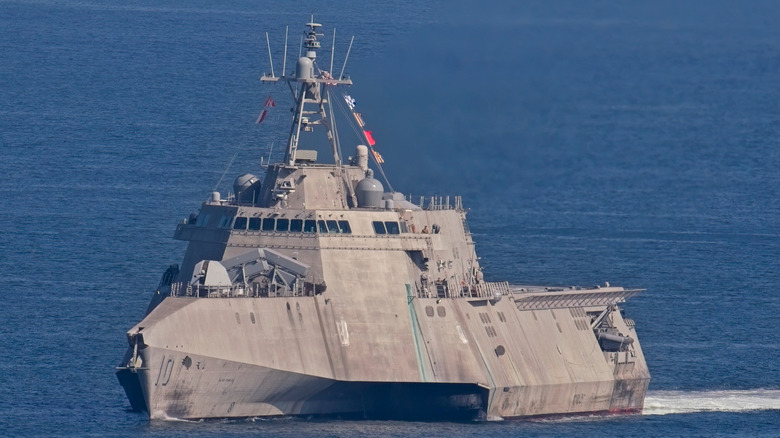What Does DD Stand For On Navy Ships?
Have you ever seen a Navy ship bearing letters and numbers like DDG-51 or DD-214 and wondered what those codes mean? These ship labels might look random, but they follow a system that's been around for over 100 years. Each combination of letters and numbers indicates what kind of ship it is and what it's built to do. One of the most common and historic codes is DD. So what does DD stand for on Navy ships?
DD stands for destroyers, one of seven types of modern warships — ships that have both offensive and defensive abilities. The "DD" follows a naming convention that dates back to 1920, when the Navy started using hull classification symbols — double letters followed by numbers — to identify different ships. While DD is for destroyers, BB is used on battleships and SS is used for submarines.
Ships can also be relabeled by the Navy as needed. For example, the USS Parsons, which was once DD, was switched to DDG in 1967, after guided missiles were added to the ship.
The numbers on Navy ships are important for identification
While the letter designations of powerful Navy destroyers as DD, battleships as BB and submarines as SS are easy to understand, this doesn't explain what the numbers are that follow those letters. So what do those numbers represent?
The numbers go in order based on when the ship was first put into use, thus making them specific to each ship in the fleet. This not only gives the Navy a way to quickly identify each one, it also eliminates confusion when two ships share the same name. The retired USS Missouri, the Navy's last battleship, is labeled BB-63. The active submarine with the same name is designated as SSN-780.
Since the numbers are sequential, it's easy to get an idea of a ship's age — the lower the number, the older the ship. And following that coding process, ships with higher numbers are newer.

